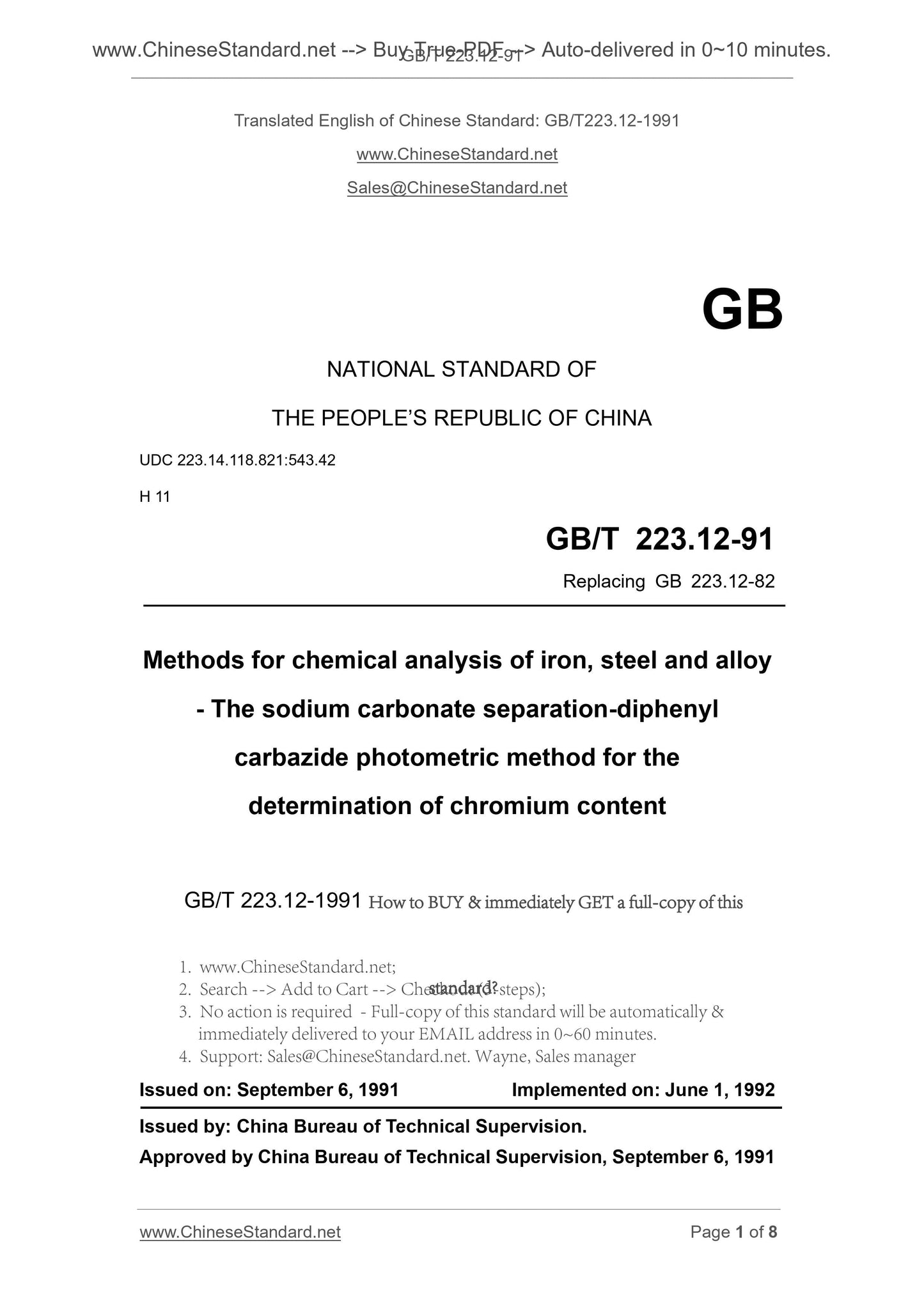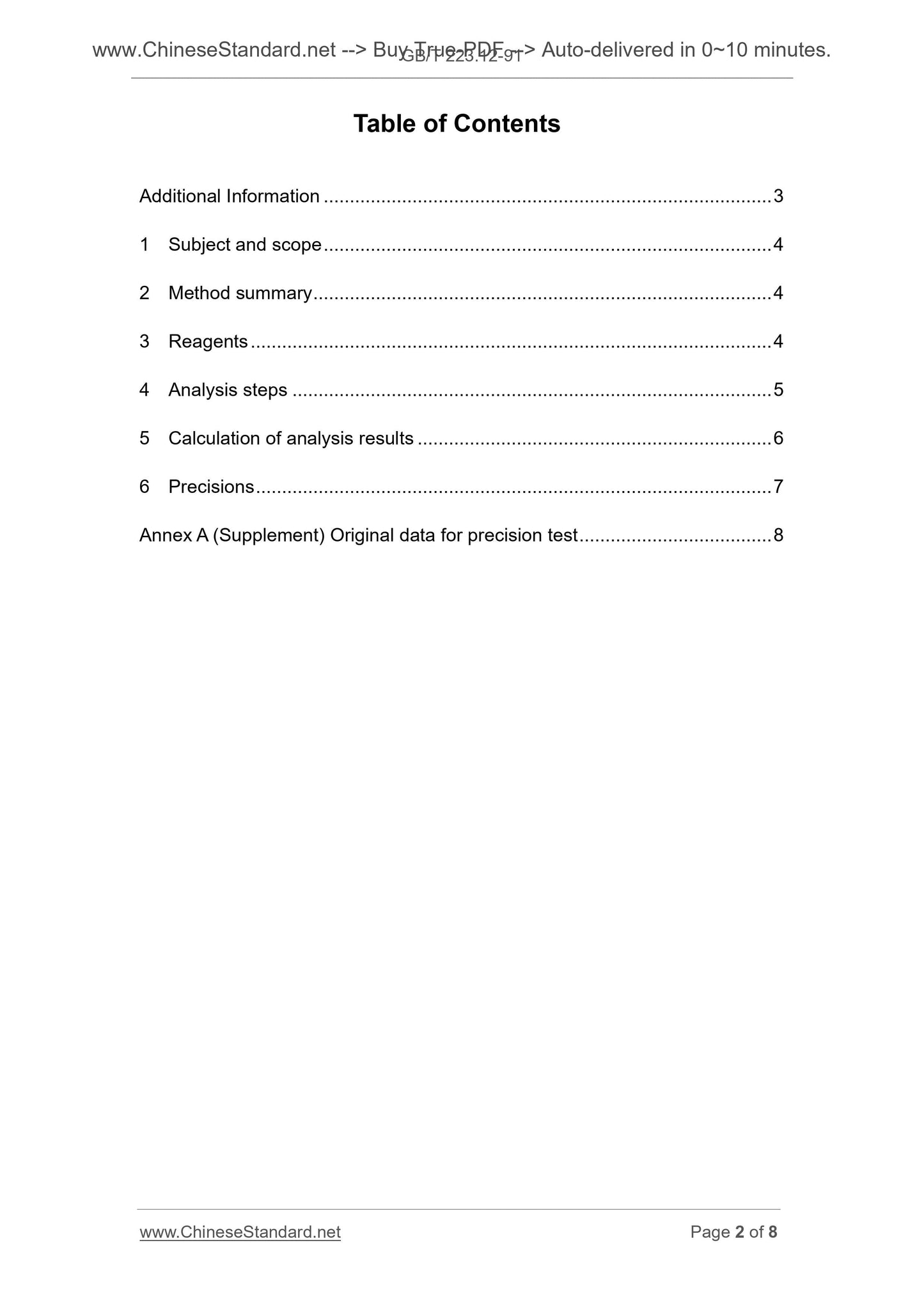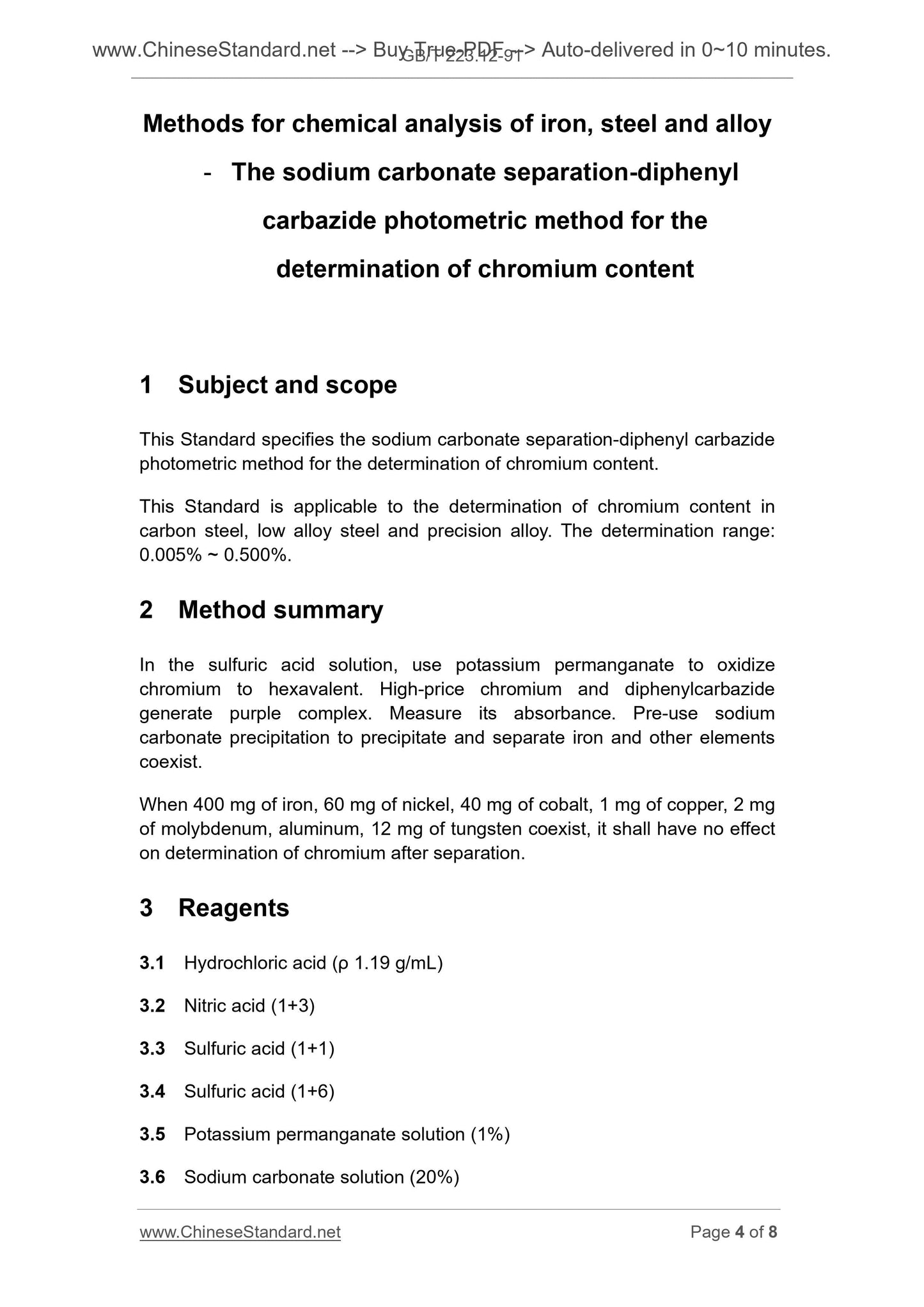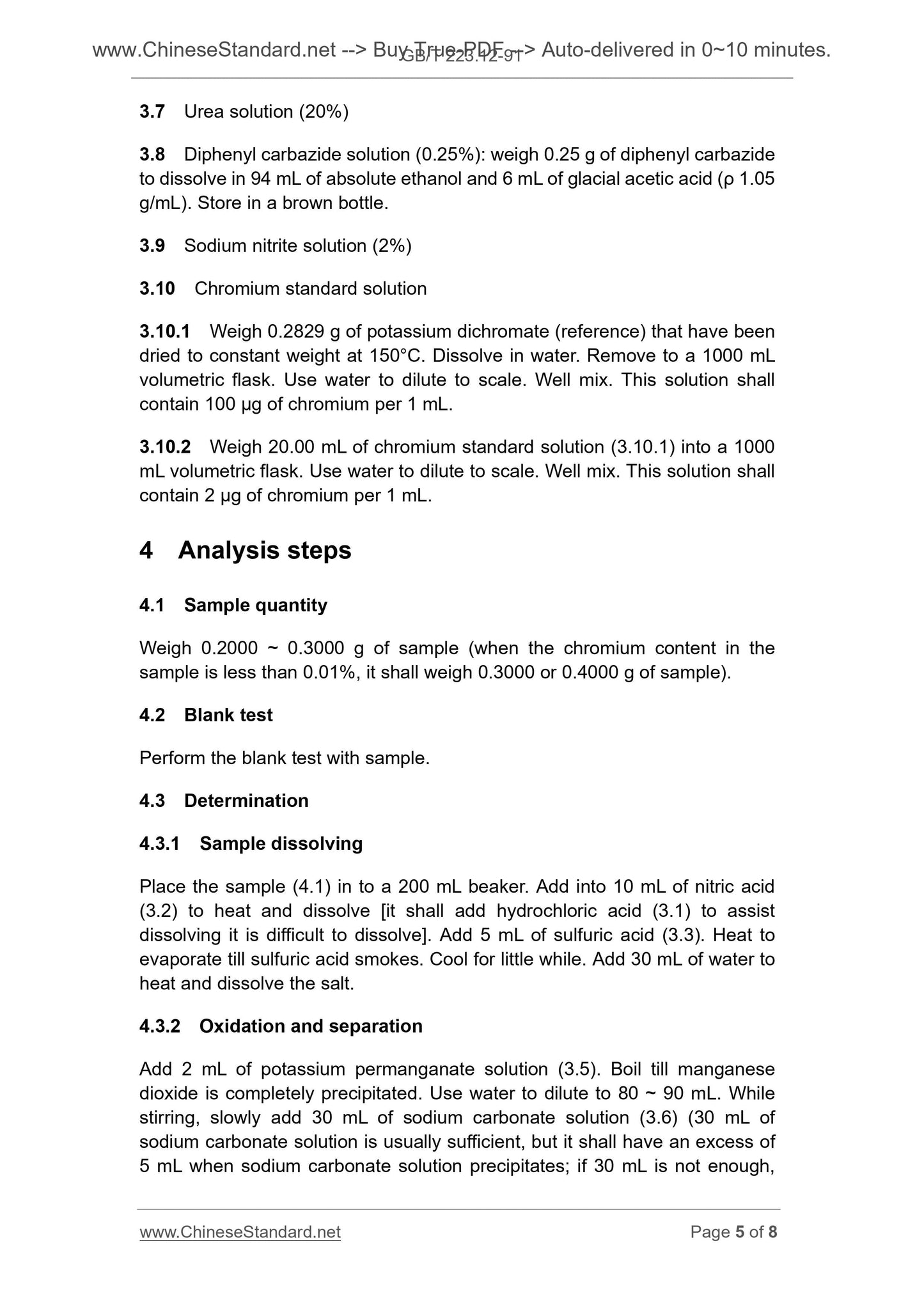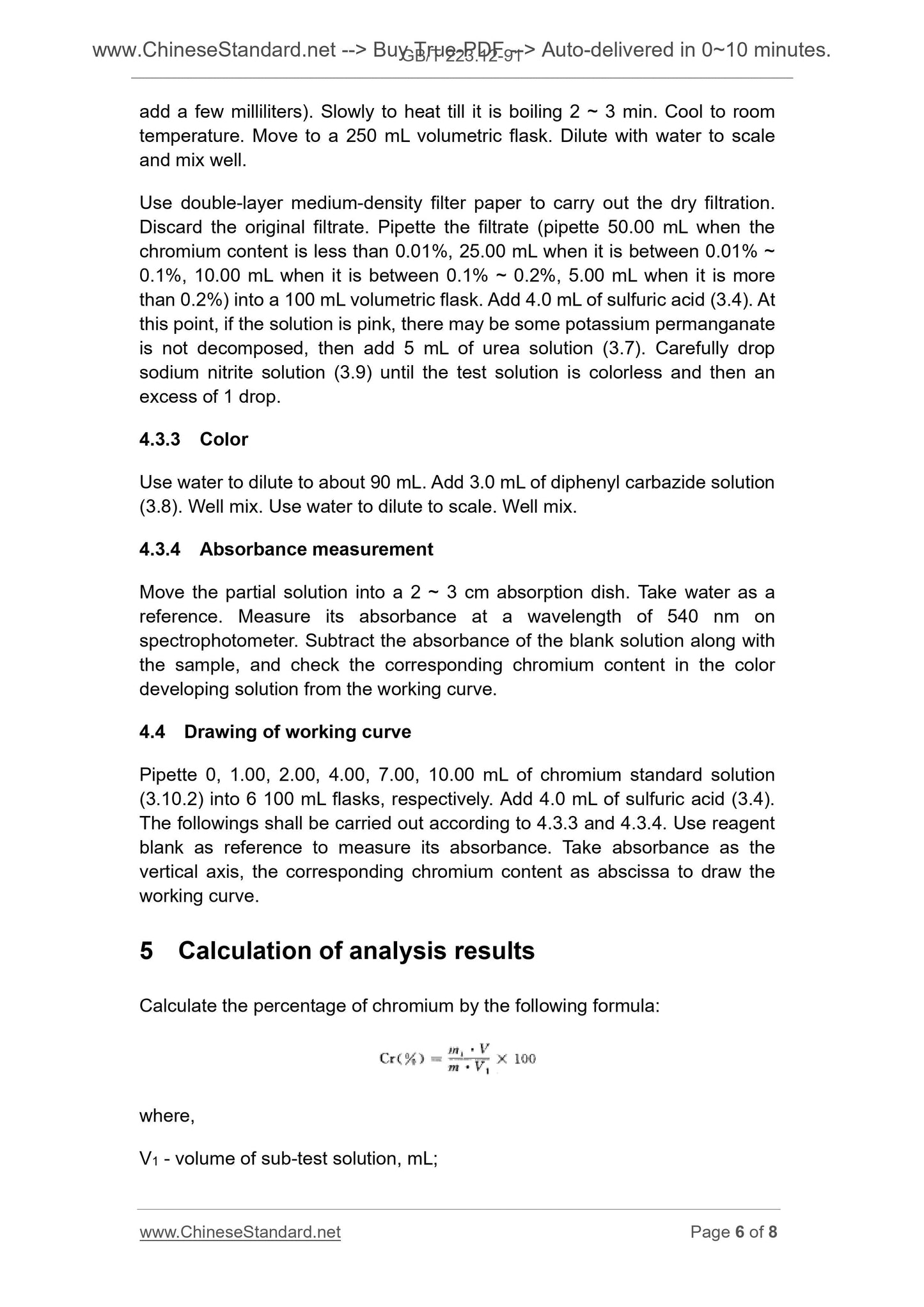1
/
of
5
www.ChineseStandard.us -- Field Test Asia Pte. Ltd.
GB/T 223.12-1991 English PDF (GB/T223.12-1991)
GB/T 223.12-1991 English PDF (GB/T223.12-1991)
Regular price
$70.00
Regular price
Sale price
$70.00
Unit price
/
per
Shipping calculated at checkout.
Couldn't load pickup availability
GB/T 223.12-1991: Methods for chemical analysis of iron, steel and alloy. The sodium carbonate separation-diphenyl carbazide photometric method for the determination of chromium content
Delivery: 9 seconds. Download (and Email) true-PDF + Invoice.Get Quotation: Click GB/T 223.12-1991 (Self-service in 1-minute)
Newer / historical versions: GB/T 223.12-1991
Preview True-PDF
Scope
This Standard specifies the sodium carbonate separation-diphenyl carbazidephotometric method for the determination of chromium content.
This Standard is applicable to the determination of chromium content in
carbon steel, low alloy steel and precision alloy. The determination range.
0.005% ~ 0.500%.
Basic Data
| Standard ID | GB/T 223.12-1991 (GB/T223.12-1991) |
| Description (Translated English) | Methods for chemical analysis of iron, steel and alloy. The sodium carbonate separation-diphenyl carbazide photometric method for the determination of chromium content |
| Sector / Industry | National Standard (Recommended) |
| Classification of Chinese Standard | H11 |
| Classification of International Standard | 77.08 |
| Word Count Estimation | 5,519 |
| Date of Issue | 9/6/1991 |
| Date of Implementation | 6/1/1992 |
| Older Standard (superseded by this standard) | GB 223.12-1982 |
| Issuing agency(ies) | State Bureau of Technical Supervision |
| Summary | This standard specifies the use of sodium carbonate separation - Diphenylcarbazide hydrazine spectrophotometric determination of chromium content. This standard applies to carbon steel, low alloy steel and precision determination of chromium content of the alloy. Measuring range: 0. 005% to 0. 500%. |
Share
